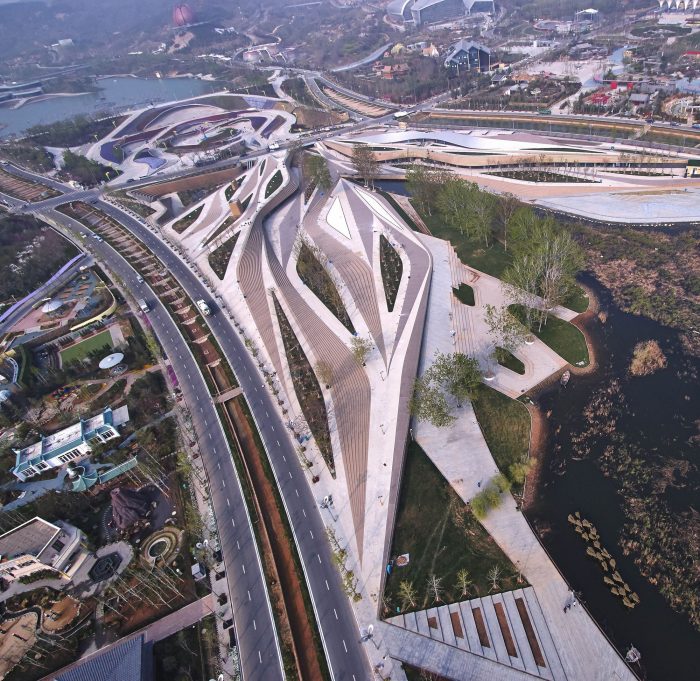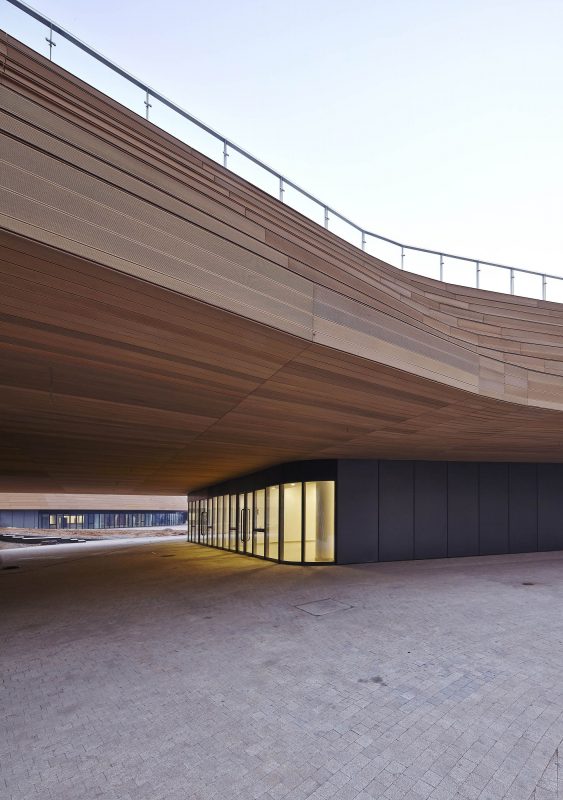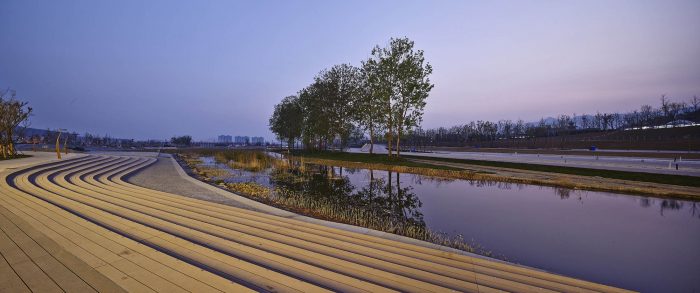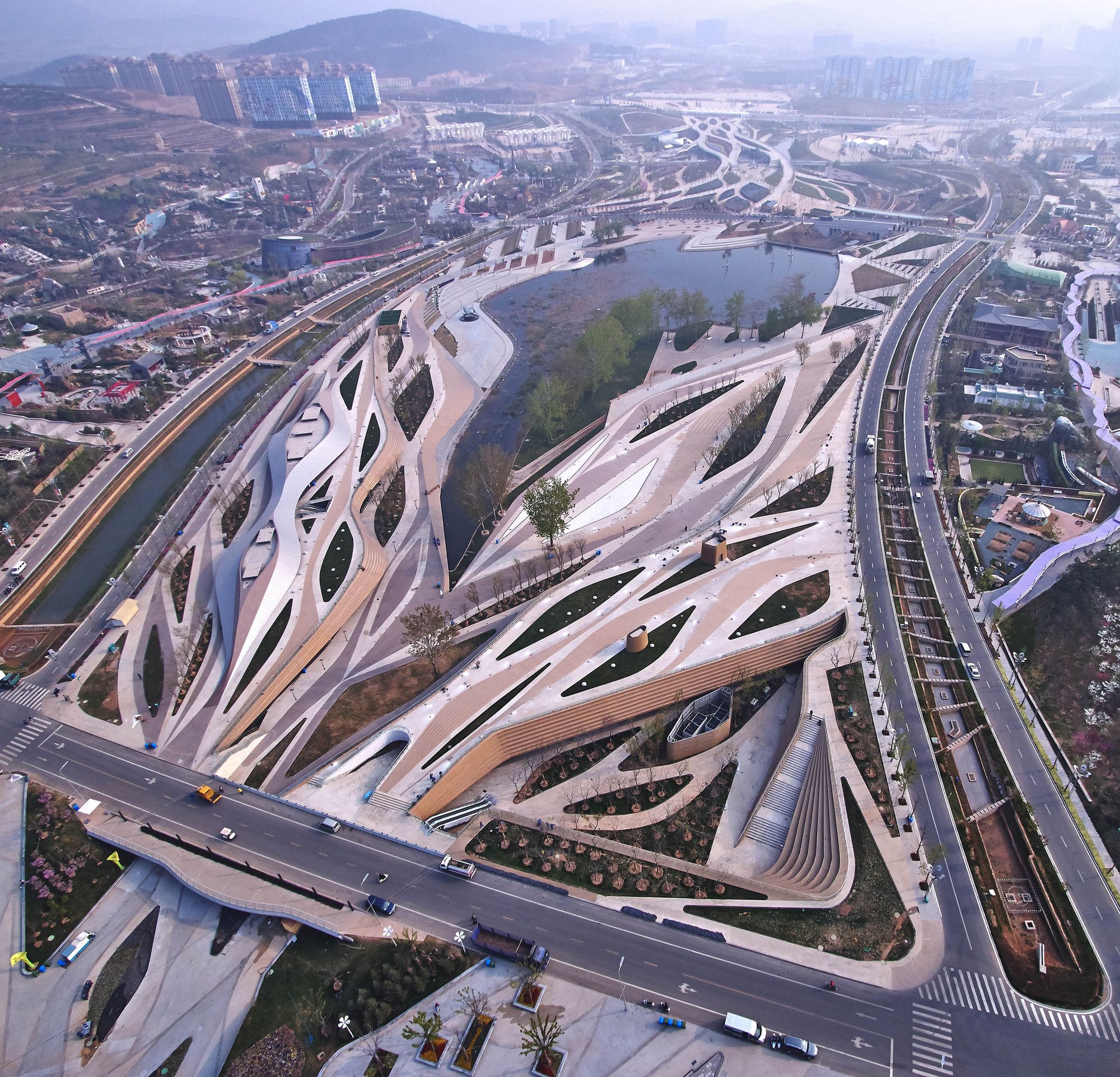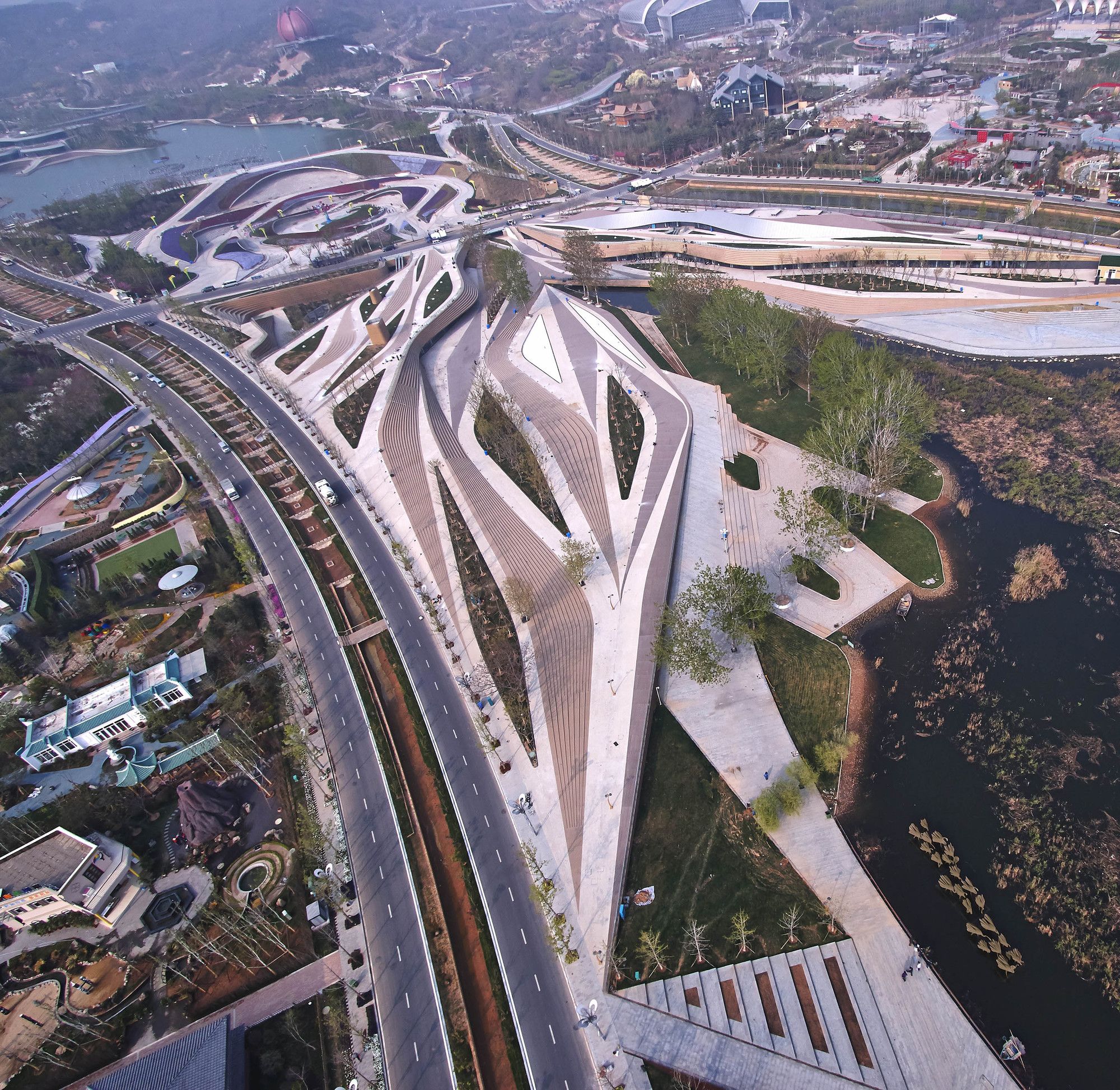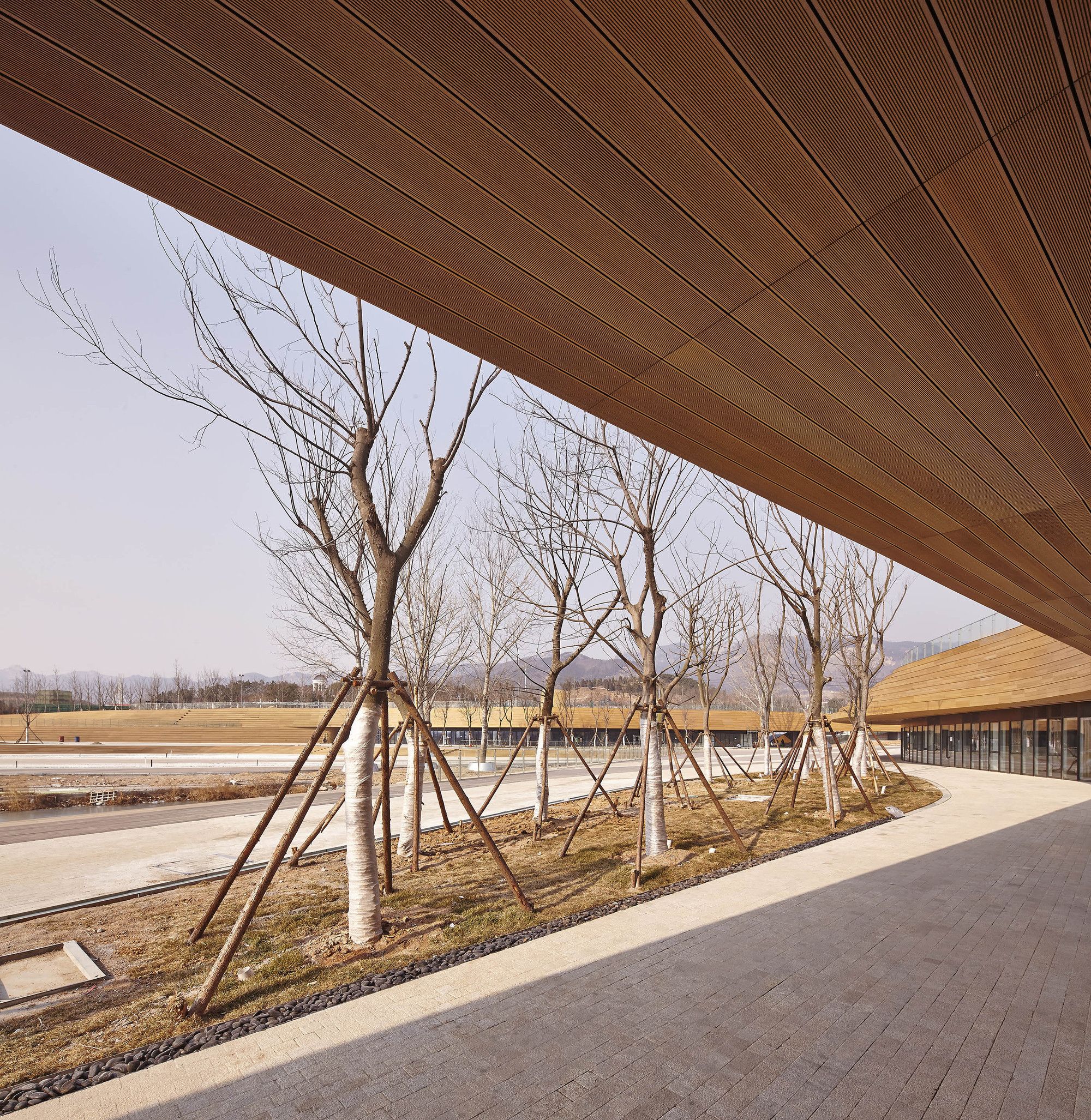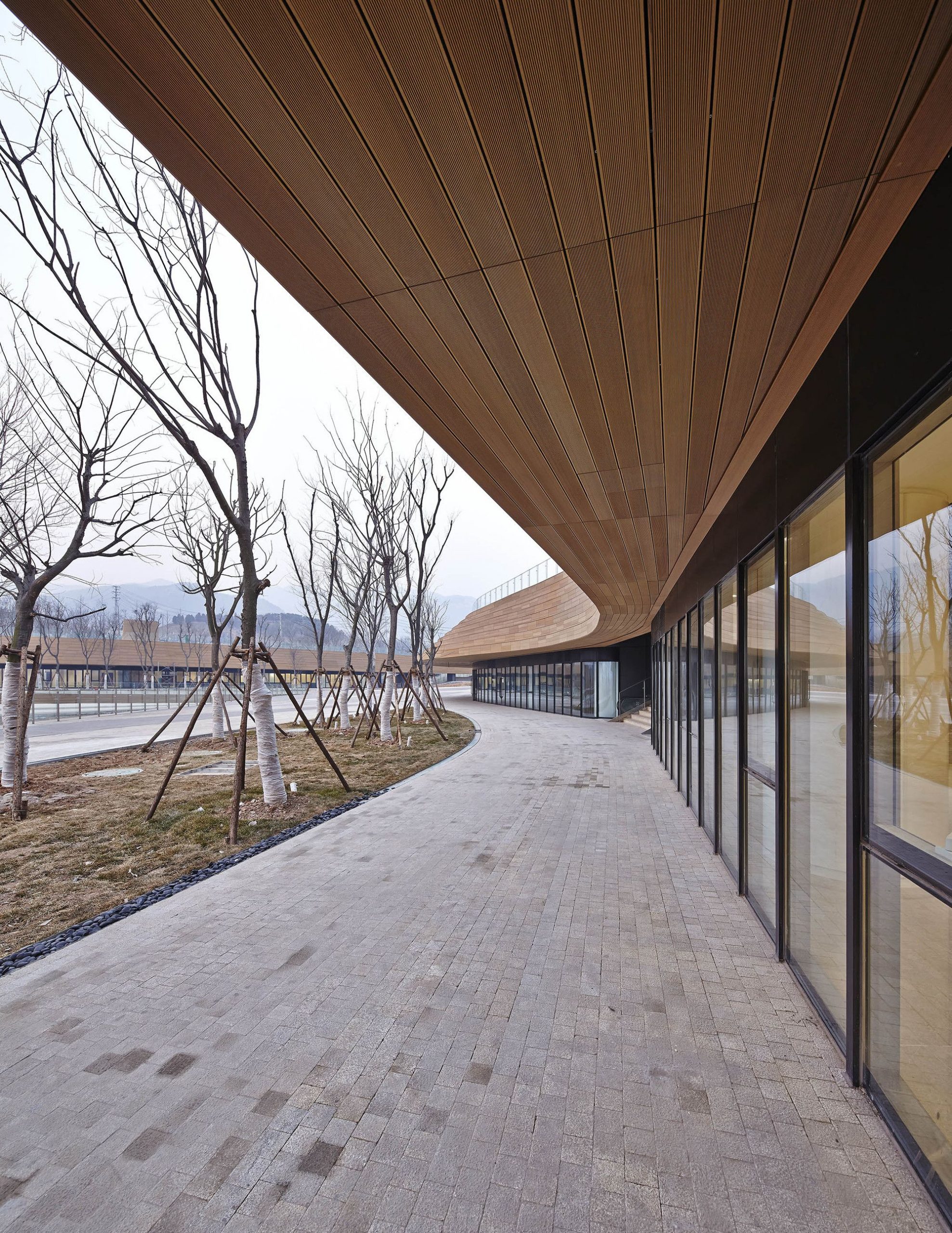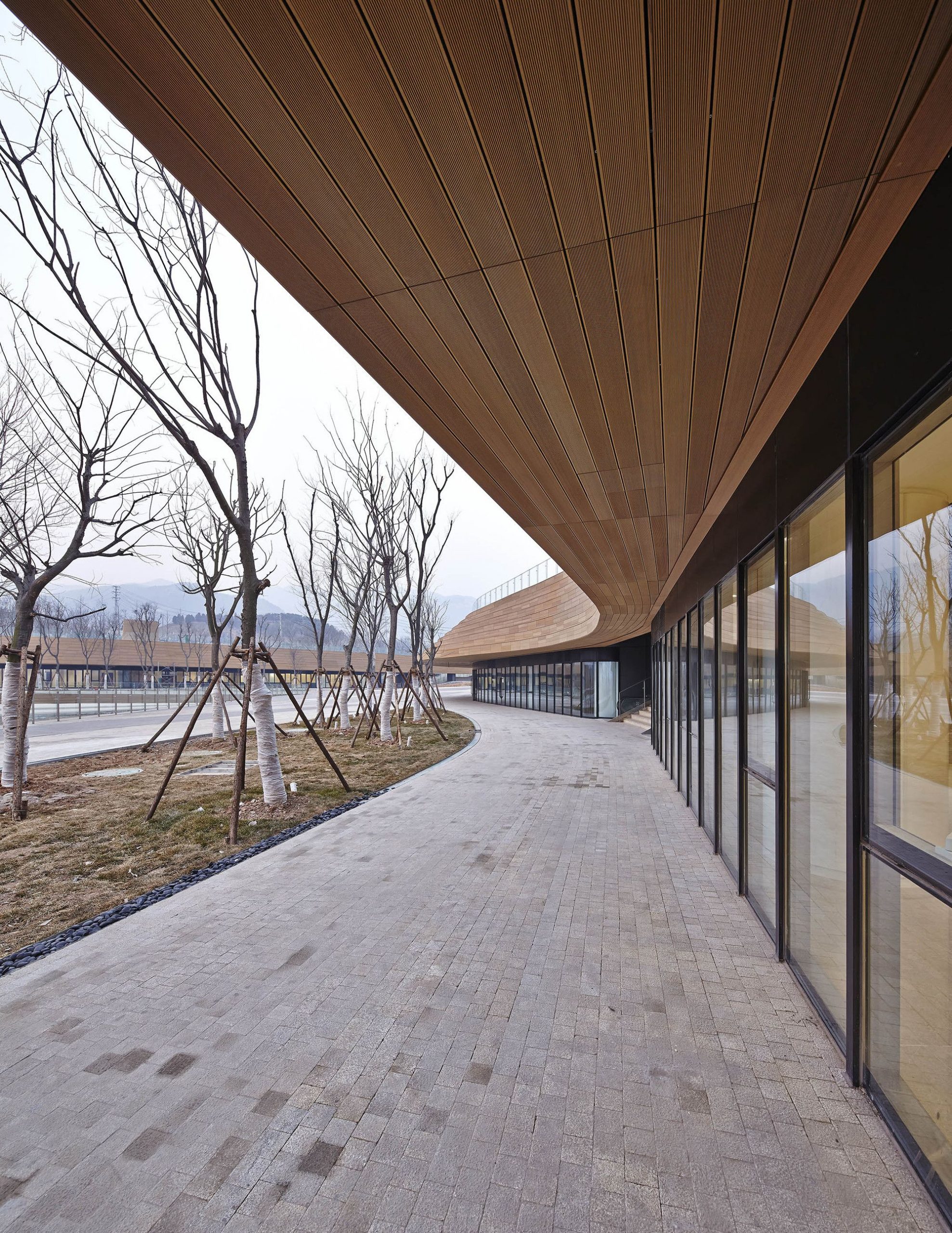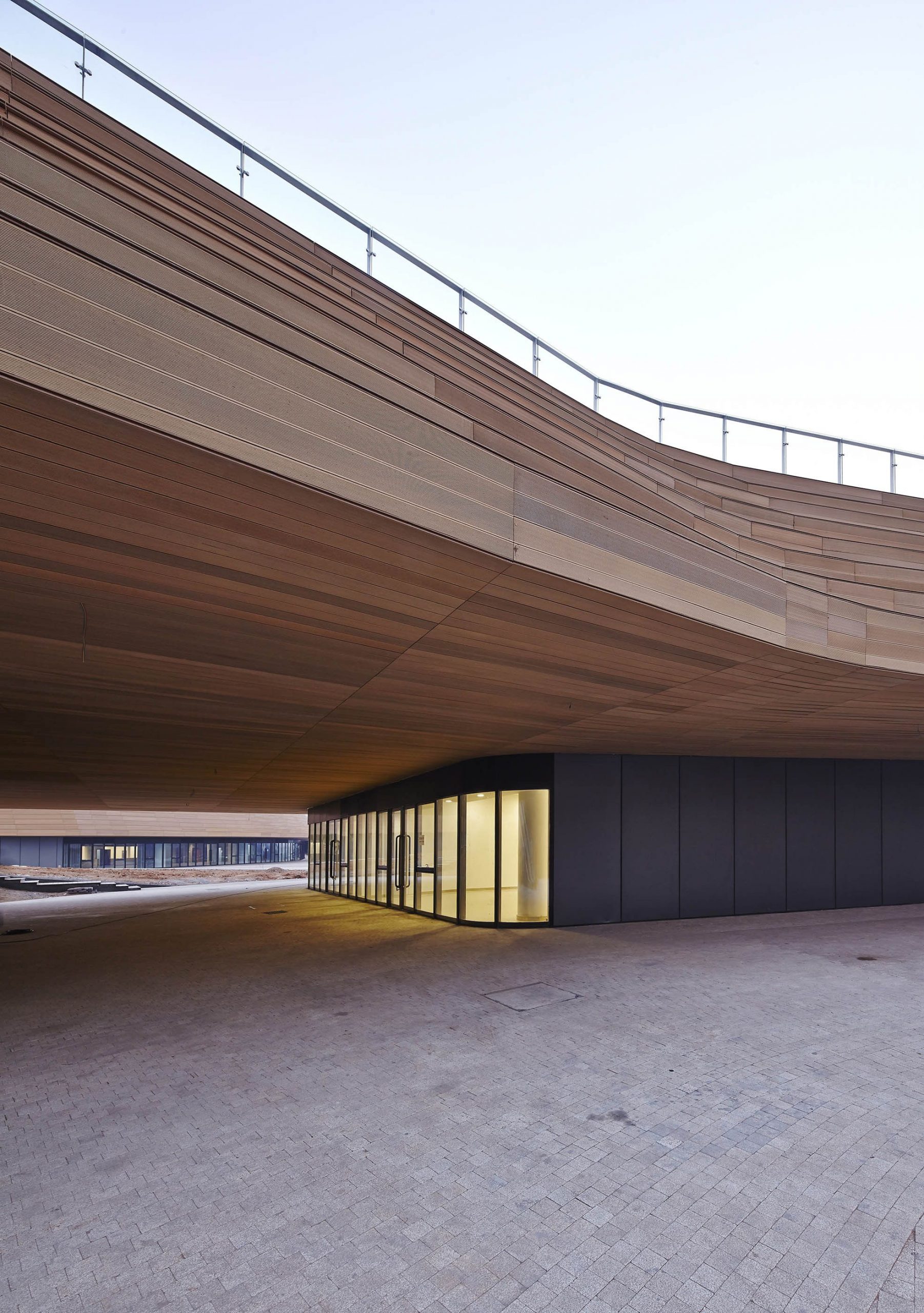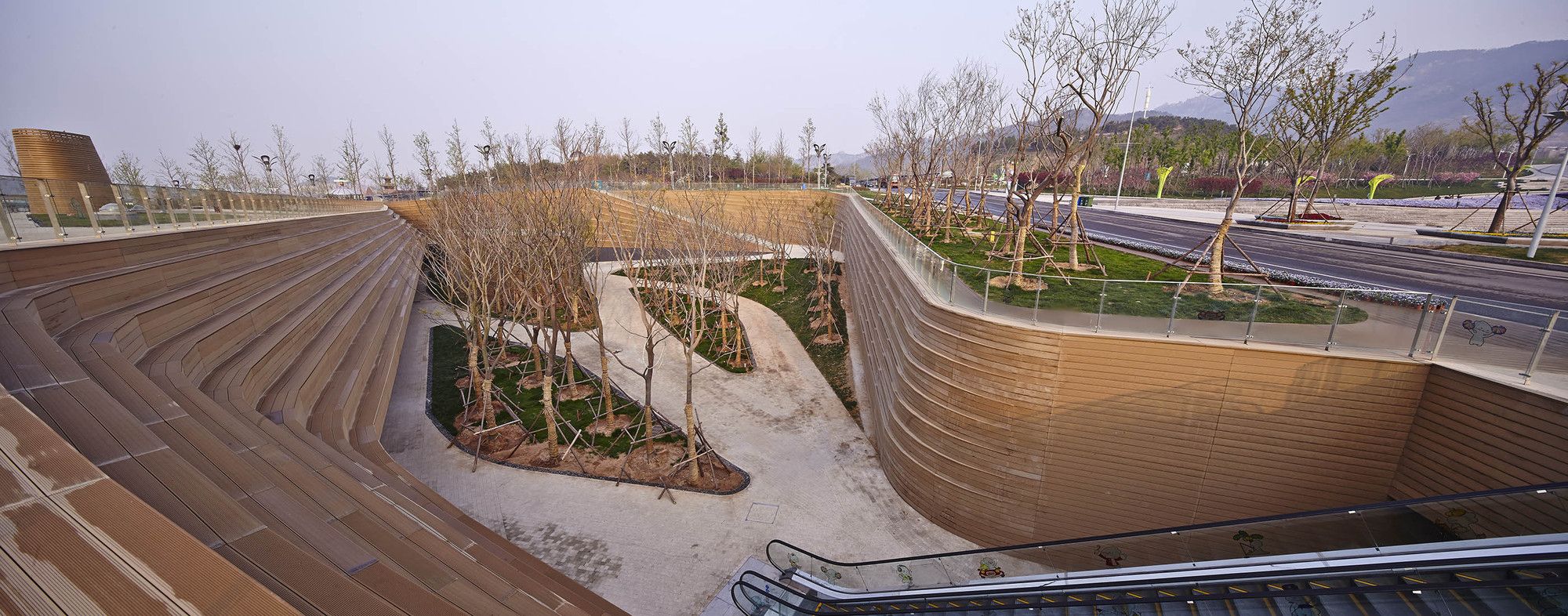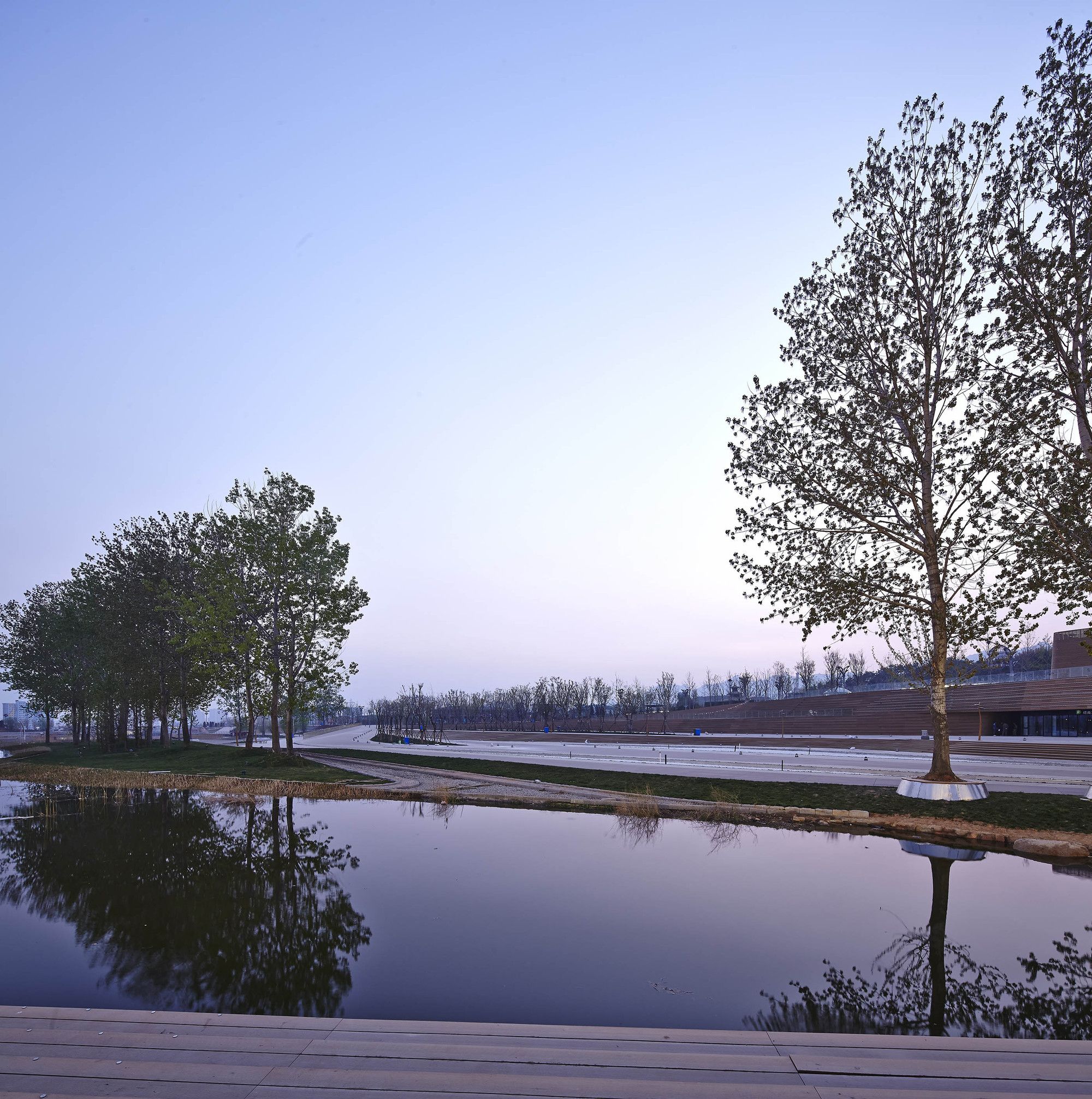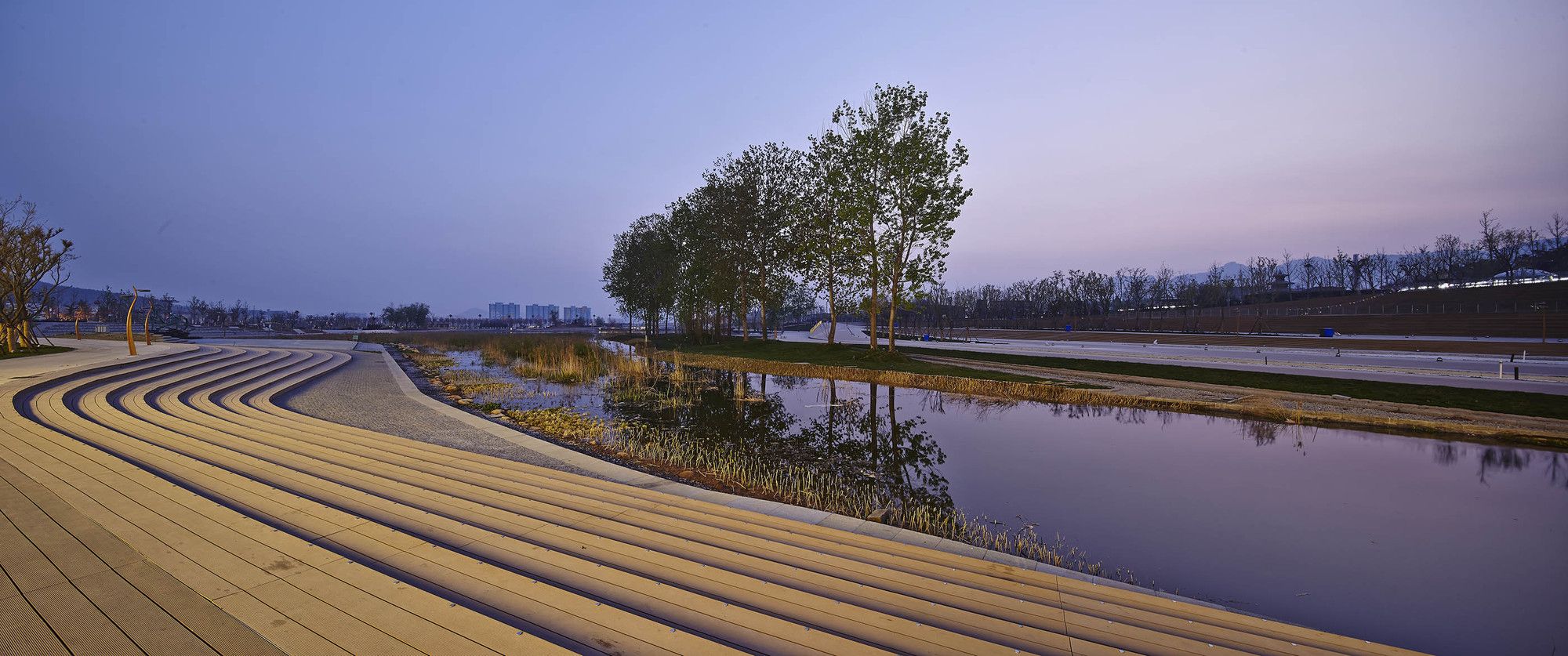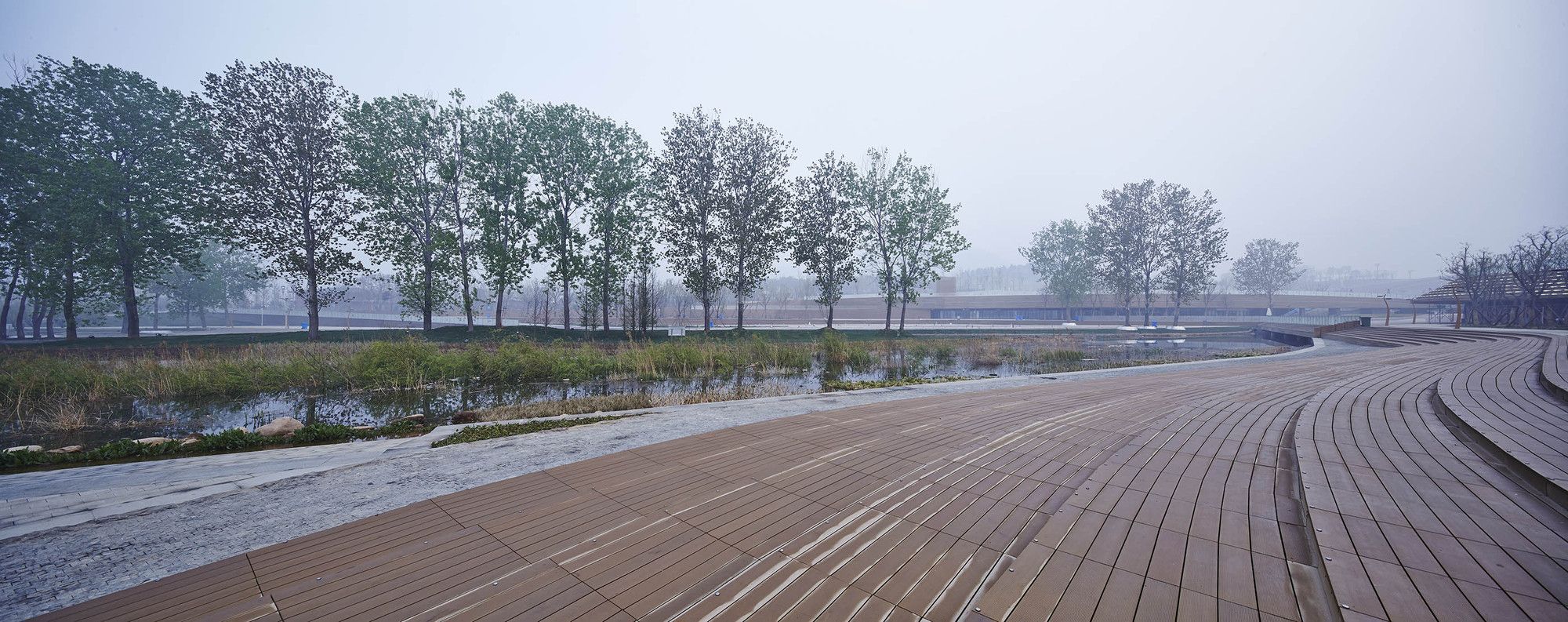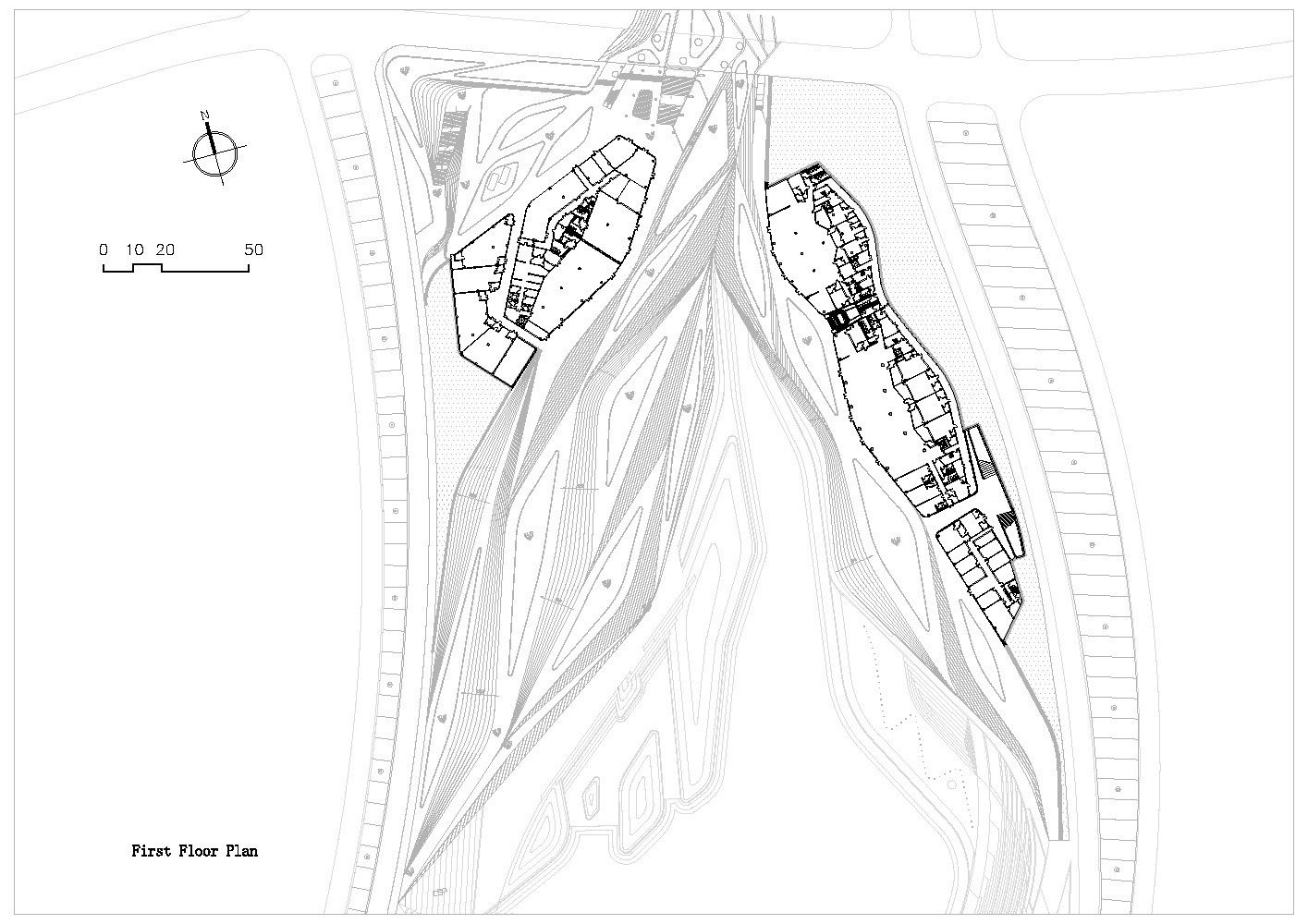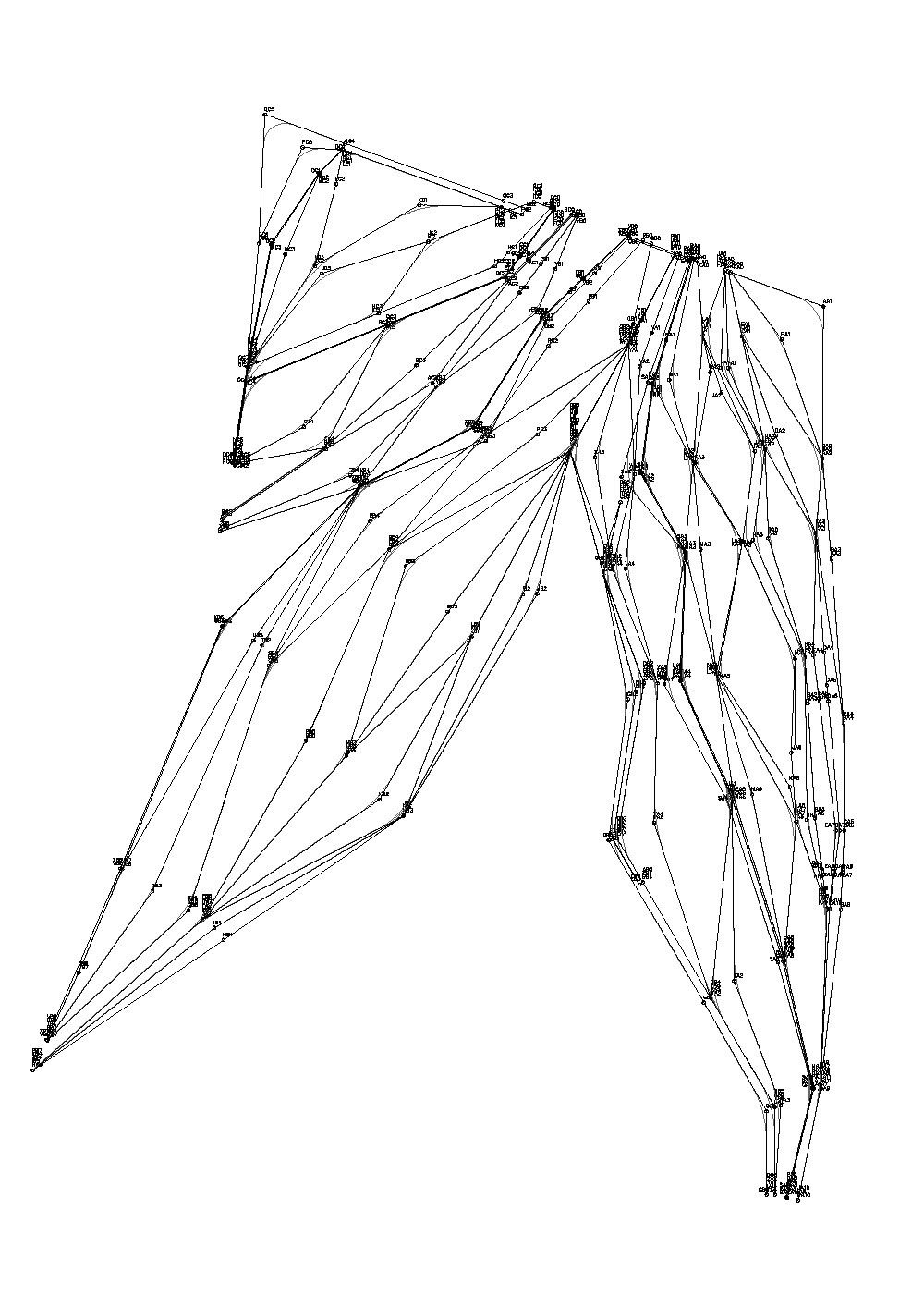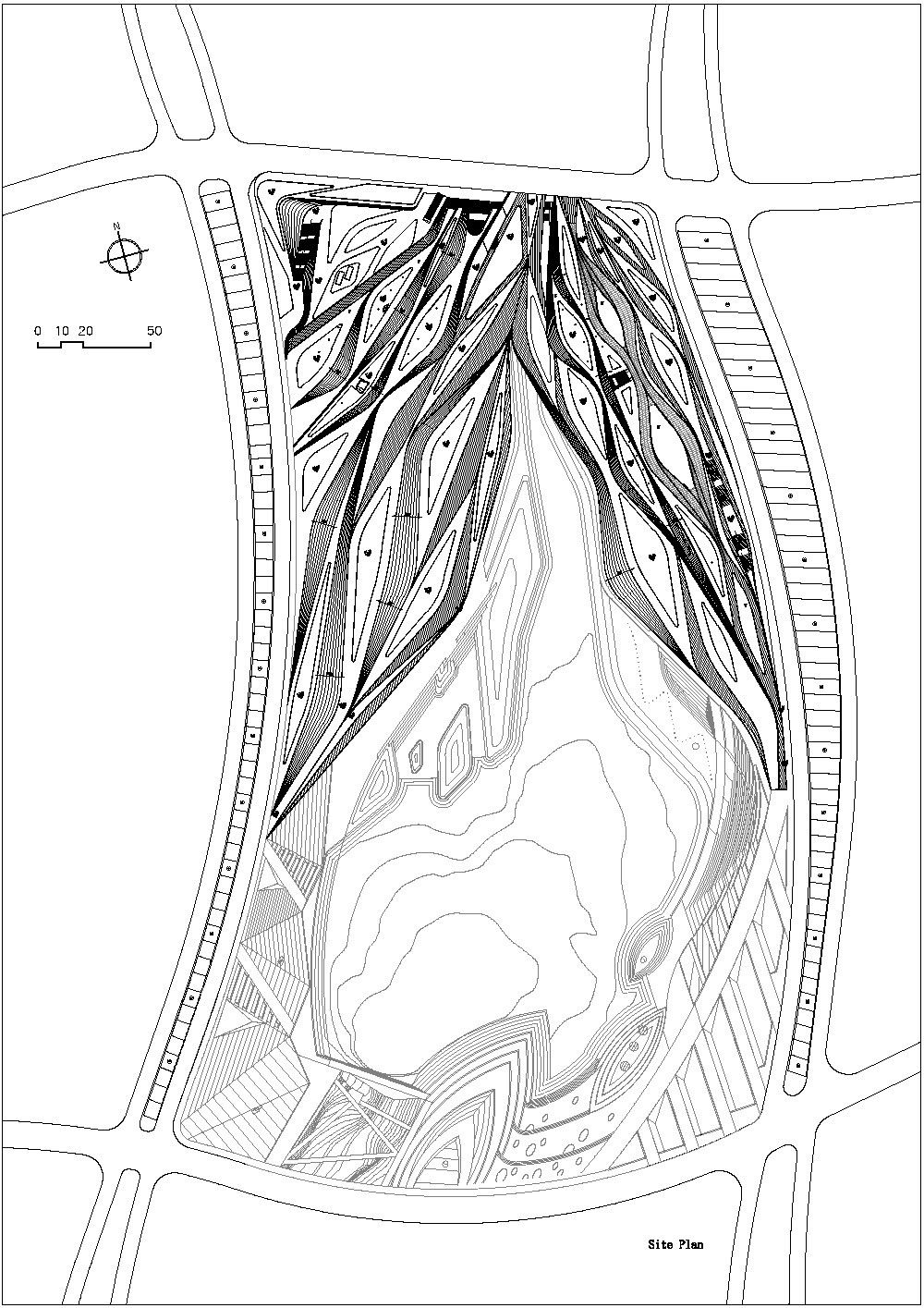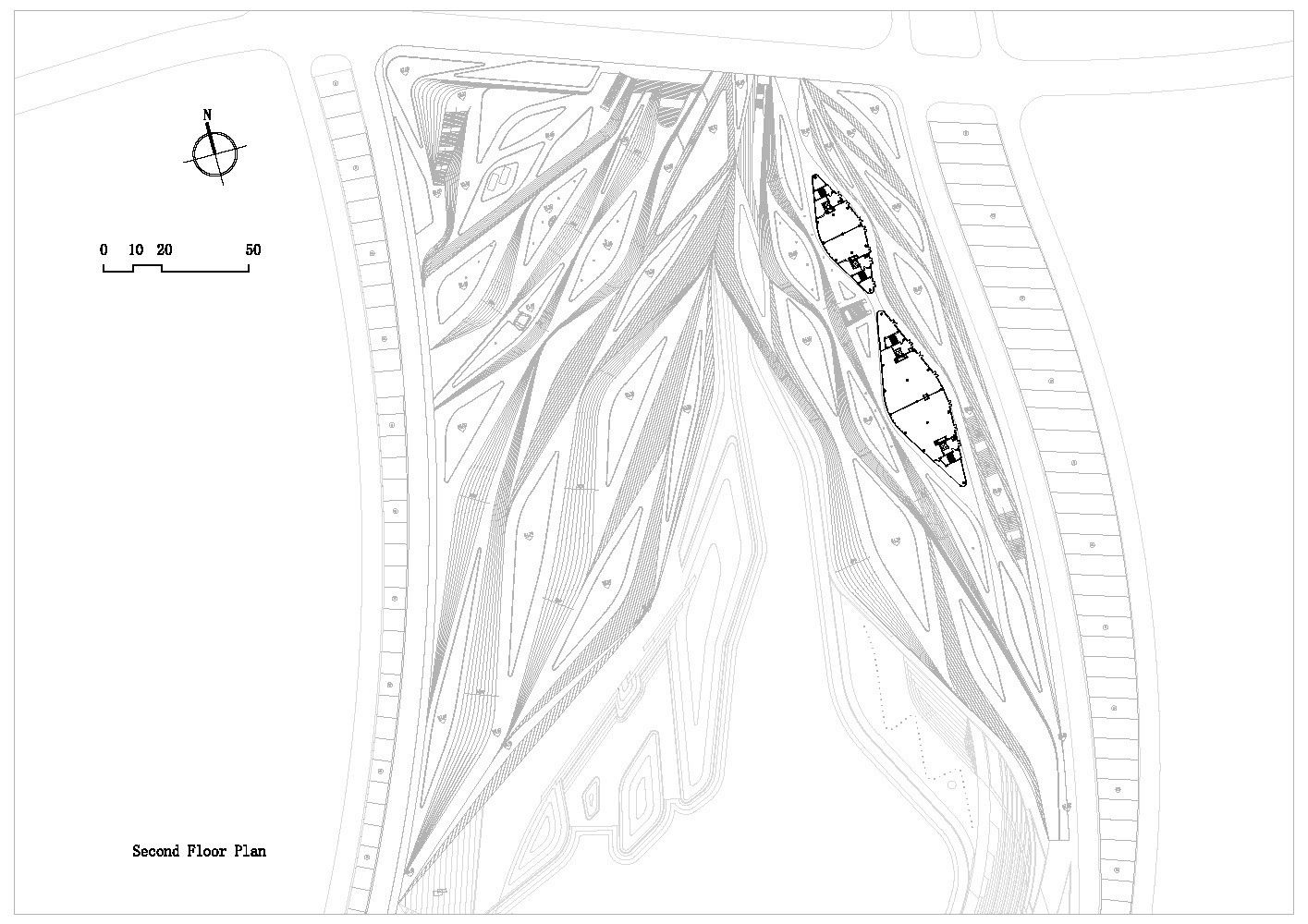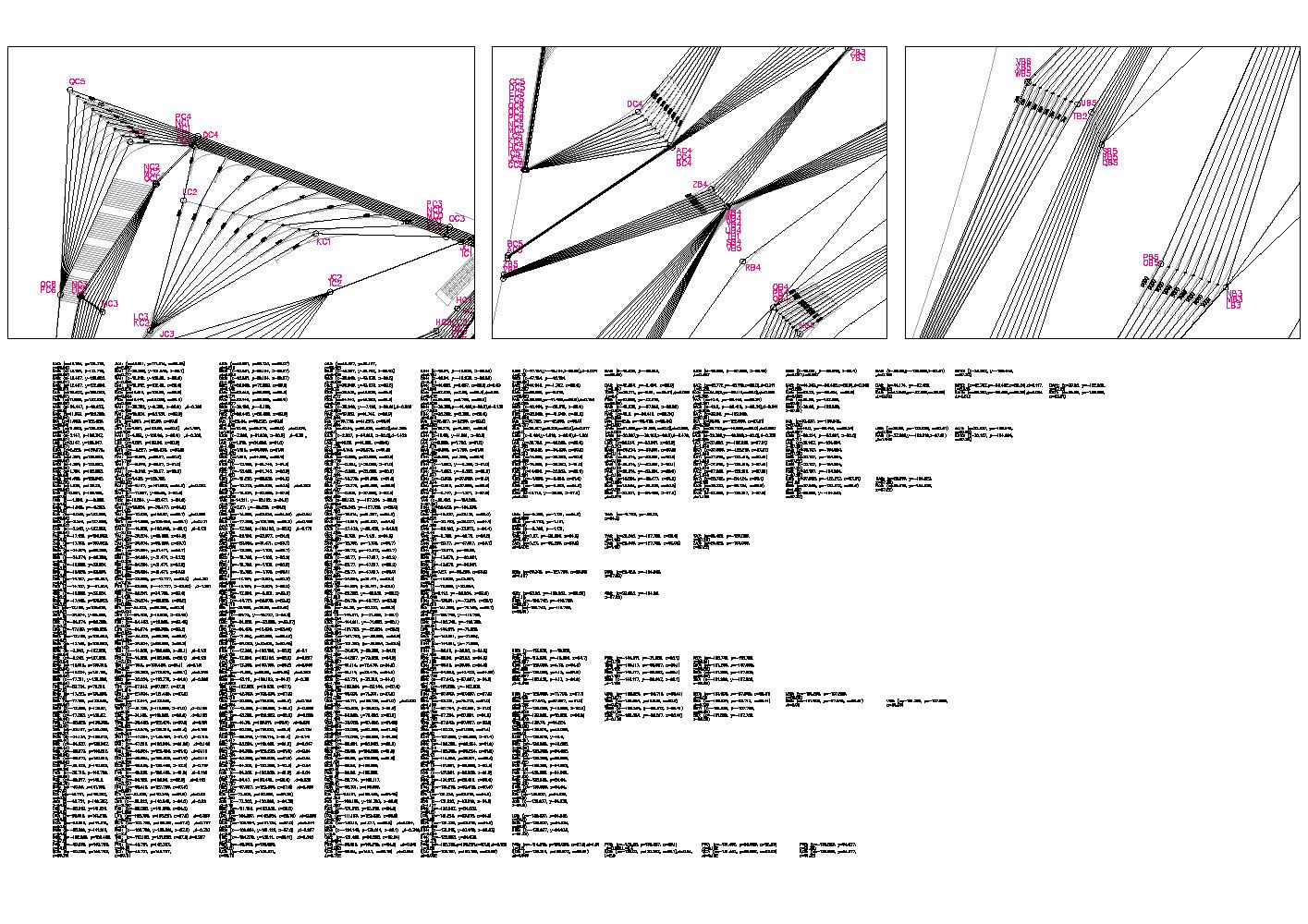Earthly Pond Service Center
HHD FUN studio have completed the construction for the Earthly Pond Service Center of International Horticultural Exposition in Qingdao, China.
The project consists of a large-scale intervention, of over 23.000 square meters, in which the architects have designed an artificial landscape through heavy intervention, imposing a parametrically inspired geometry. Out of this geometry, a great variety of spaces is achieved, some of which can be said to be of quality. Some sunken, some raised, the architect’s can’t be accused of a lack of design (of quantity of design). In fact, this is one of the project’s flaws – the excess of design.
The architect’s attitude is somewhat paradoxical, in its genesis: to create an artificial landscape that looks natural in place a natural landscape. Everything has the stamp of the architects; no elevation nor depression on the terrain is left to nature nor chance. Sometimes, one has the feeling, not to design could have been a better design decision. To leave things untouched was definitely not a policy for HHD FUN in this project.
The shape of the buildings that come about in this intervention is also determined by this expressive geometry (it’s expressivity is best seen from an aerial view or plan view, which says a lot). What does this mean for the actual experience, for the use by the people? People don’t see things in plan view – architects do.
Ultimately, it’s the people and their practices that determine the success or not of a project of this type; perhaps the folk at Qingdao will frequently use and care for this place, who knows. The only thing that can be said without analyzing each little nook and corner by itself is that the project tends to be self referential, i.e. it justifies itself by reference to it’s internal logic and geometry – a tautology of sorts. Yet this internal logic consists of an intense act of design, an incessant populating of the landscape with architectural elements. Does it offer variety? Absolutely. Quality of spaces? In some cases, yes. But, ultimately, is this not all too much? When is it proper to stop designing and to say that enough is enough? Have the architects jeopardized the quality or success of their own project by design?
photography by © DuoCai Photograph
photography by © DuoCai Photograph
photography by © Zhenfei Wang
photography by © Zhenfei Wang
photography by © Zhenfei Wang
photography by © Zhenfei Wang
photography by © Zhenfei Wang
photography by © Zhenfei Wang
photography by © Zhenfei Wang
photography by © Zhenfei Wang
First Floor
Geometry
Masterplan
Second Floor
Detail
Daniel Anthony Fraga


